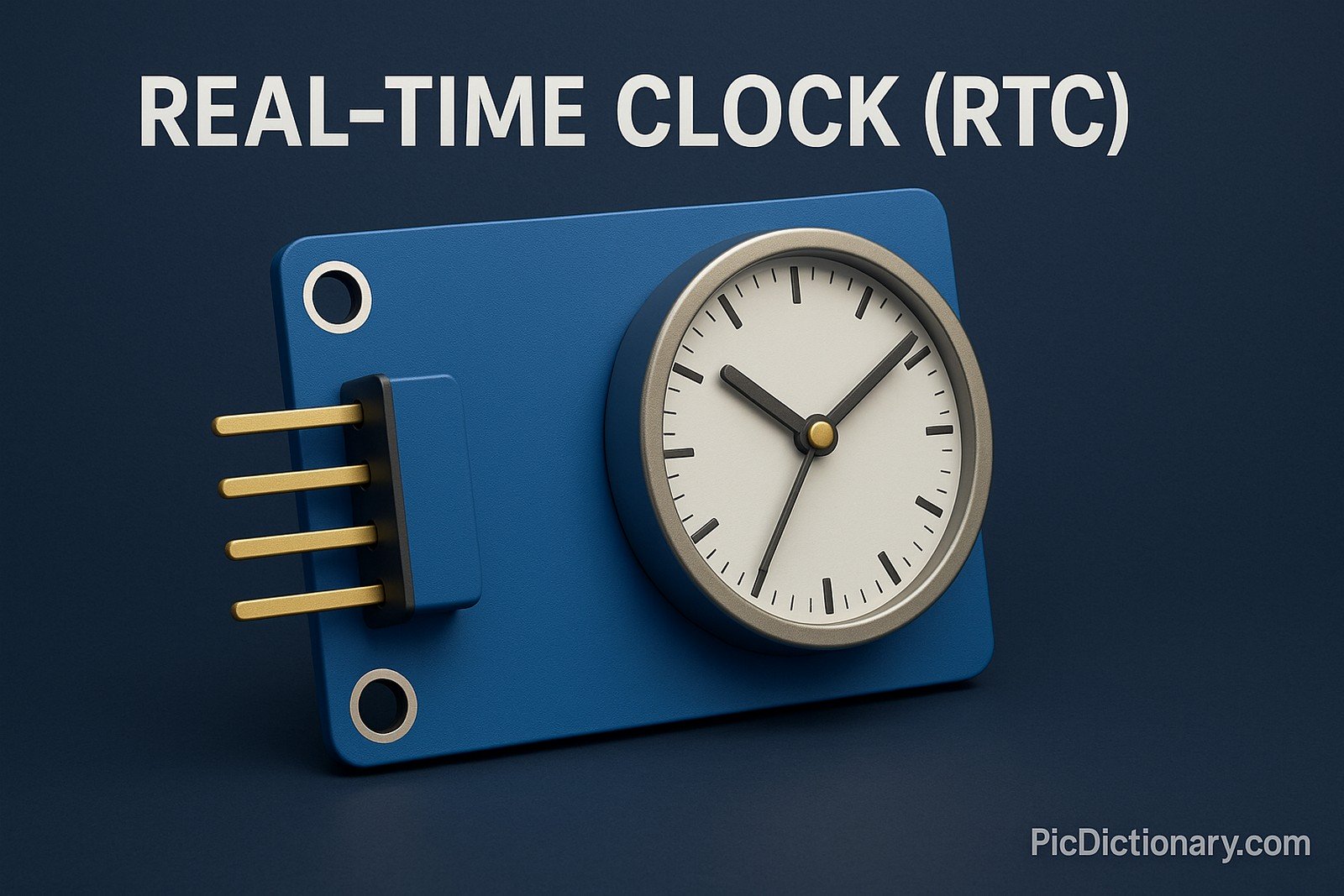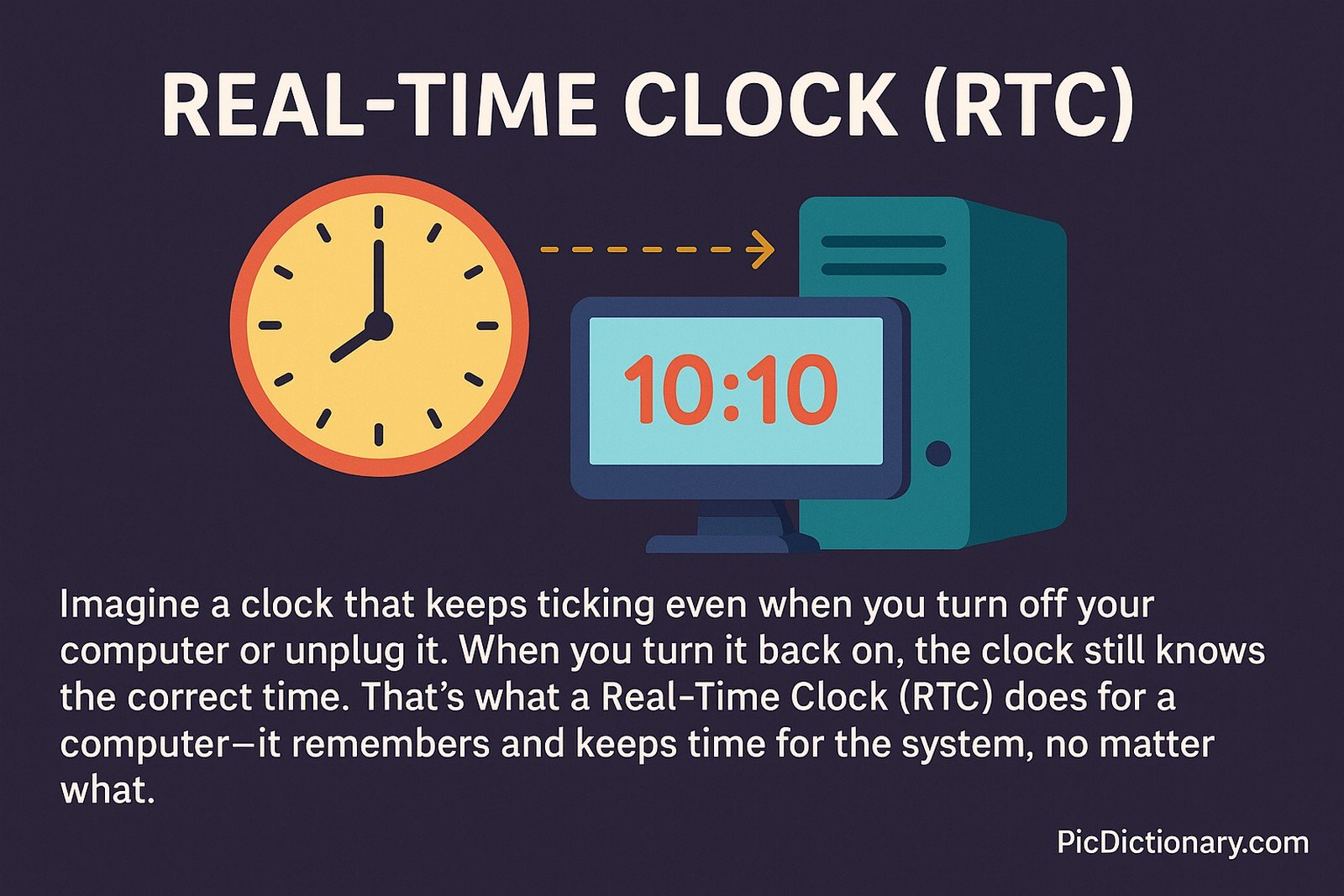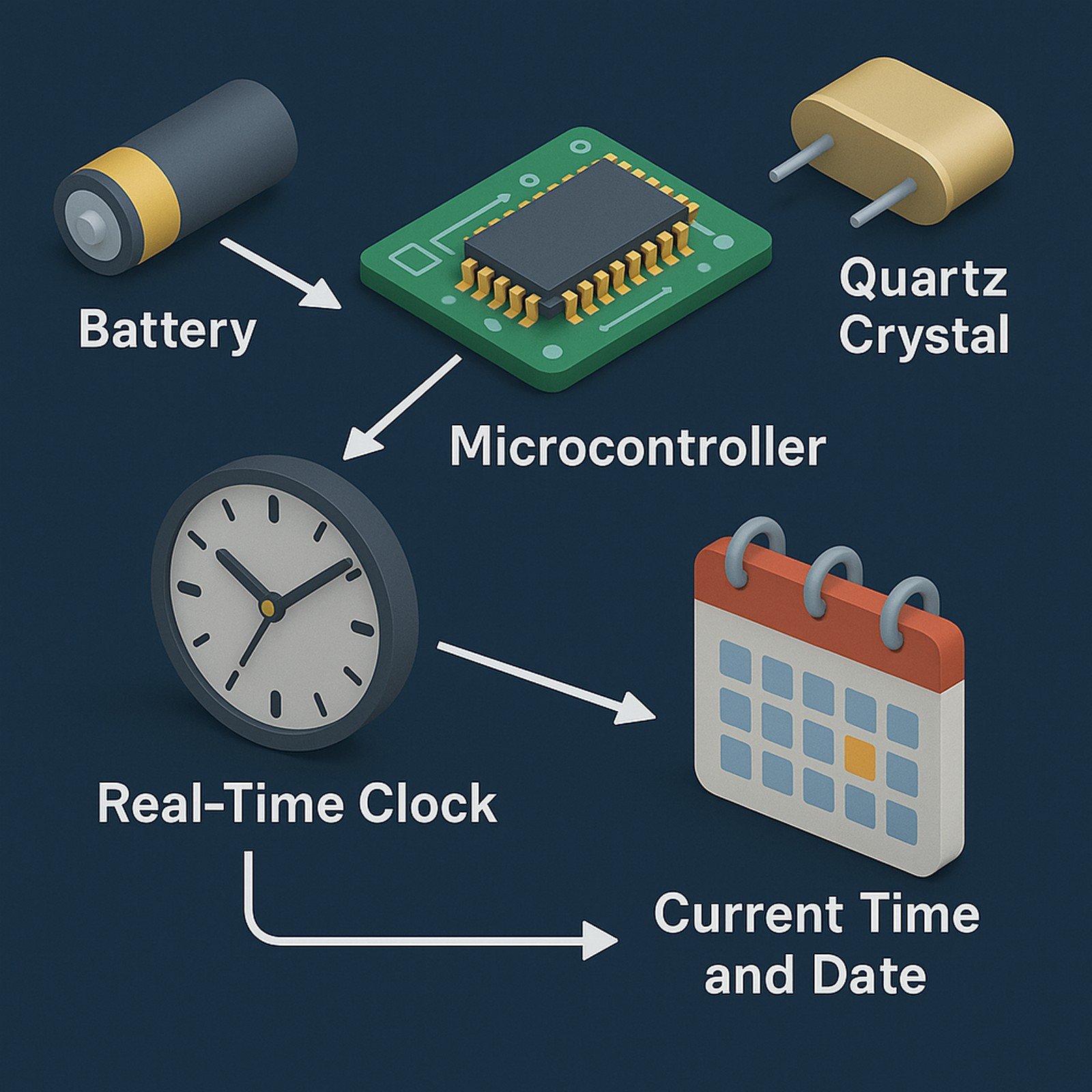Real-Time Clock (RTC)

Quick Navigation:
- Real-Time Clock (RTC) Definition
- Real-Time Clock (RTC) Explained Easy
- Real-Time Clock (RTC) Origin
- Real-Time Clock (RTC) Etymology
- Real-Time Clock (RTC) Usage Trends
- Real-Time Clock (RTC) Usage
- Real-Time Clock (RTC) Examples in Context
- Real-Time Clock (RTC) FAQ
- Real-Time Clock (RTC) Related Words
Real-Time Clock (RTC) Definition
A Real-Time Clock (RTC) is an electronic device, typically found on a computer motherboard or embedded system, that keeps track of the current time and date even when the system is powered off. It uses a small battery to maintain timekeeping accuracy. RTCs are critical for time-stamping files, system logs, and ensuring scheduled tasks run at the correct time. They are built using quartz crystal oscillators and are often integrated into microcontrollers and processors.
Real-Time Clock (RTC) Explained Easy
Imagine a clock that keeps ticking even when you turn off your computer or unplug it. When you turn it back on, the clock still knows the correct time. That’s what a Real-Time Clock (RTC) does for a computer—it remembers and keeps time for the system, no matter what.
Real-Time Clock (RTC) Origin
The concept of real-time clocks dates back to early computing when continuous time tracking was needed for automation, logging, and synchronization. Early digital clocks in computers evolved into RTC chips, first widely used in the 1980s in personal computers to manage system time independently of power.
Real-Time Clock (RTC) Etymology
The term "real-time clock" reflects its purpose: to continuously maintain and provide the current time as events occur, independent of system power states.
Real-Time Clock (RTC) Usage Trends
RTCs remain popular in embedded systems, industrial controllers, and consumer electronics. With IoT expansion, demand for accurate, battery-backed timekeeping modules is rising. Many microcontrollers now include integrated RTCs, showing a trend toward on-chip solutions for reduced cost and power consumption.
Real-Time Clock (RTC) Usage
- Formal/Technical Tagging:
- Embedded Systems
- Computer Hardware
- Timekeeping Modules - Typical Collocations:
- "RTC module"
- "battery-backed RTC"
- "RTC synchronization"
- "hardware real-time clock"
Real-Time Clock (RTC) Examples in Context
- A Real-Time Clock (RTC) ensures that timestamps in system logs remain accurate even after a power outage.
- In microcontrollers, the RTC keeps track of time for scheduling tasks in automation systems.
- RTC modules in IoT devices help synchronize data collection intervals across the network.
Real-Time Clock (RTC) FAQ
- What is a Real-Time Clock (RTC)?
A Real-Time Clock (RTC) is a hardware clock that keeps track of time, powered by a battery even when a system is off. - Why is an RTC necessary in a computer?
It maintains system time and date across reboots and power failures, ensuring accurate scheduling and logs. - Can an RTC run out of power?
Yes, when its battery depletes, the RTC will lose timekeeping accuracy and needs battery replacement. - Is an RTC part of the CPU?
No, it's a separate chip or module, though sometimes integrated into modern processors or microcontrollers. - How does an RTC work?
It uses a quartz oscillator and a small battery to continuously count time even without external power. - Do smartphones have RTCs?
Yes, but their RTCs are often integrated into their main processors and synchronized via network time servers. - Can I replace an RTC battery myself?
In many PCs, yes; typically a coin-cell battery (like CR2032) powers the RTC and can be replaced. - How accurate are RTCs?
Most RTCs drift a few seconds per day, but high-precision models with temperature compensation exist. - What happens if an RTC fails?
System time resets after power-off, leading to incorrect timestamps and potential scheduling issues. - Are RTCs used in IoT devices?
Yes, for time synchronization and power-efficient time tracking between network updates.

Real-Time Clock (RTC) Related Words
- Categories/Topics:
- Embedded Systems
- Timekeeping
- Computer Hardware
Did you know?
The first IBM PC used the Motorola MC146818 chip as its Real-Time Clock (RTC), setting a standard that inspired subsequent designs across the computing industry.
PicDictionary.com is an online dictionary in pictures. If you have questions or suggestions, please reach out to us on WhatsApp or Twitter.Authors | Arjun Vishnu | @ArjunAndVishnu

I am Vishnu. I like AI, Linux, Single Board Computers, and Cloud Computing. I create the web & video content, and I also write for popular websites.
My younger brother, Arjun handles image & video editing. Together, we run a YouTube Channel that's focused on reviewing gadgets and explaining technology.



Comments powered by CComment